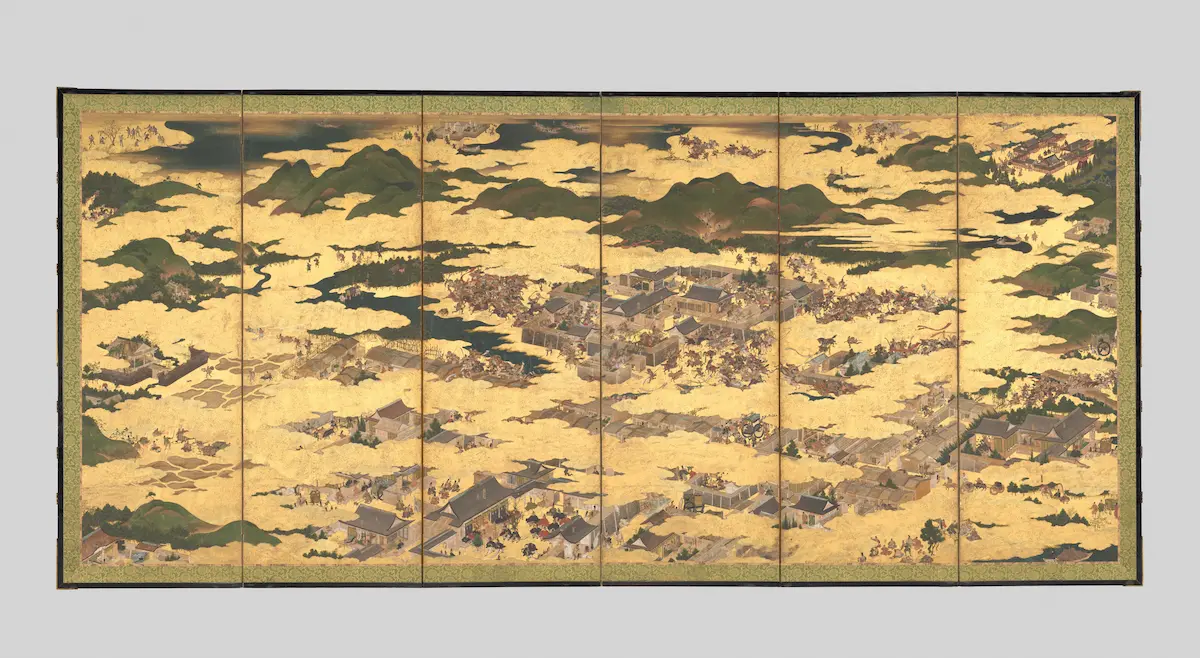The Hōgen Rebellion (Hōgen no ran), during Japan’s Heian period, was a crucial turning point marked by a struggle for Imperial succession and the rise of the samurai class.
It began with a power dispute within the imperial family and the Fujiwara clan, leading to the involvement of samurai leaders like Minamoto no Yoshitomo and Taira no Kiyomori.
The conflict peaked with the Siege of Shirakawa-den, where Emperor Go-Shirakawa’s forces defeated those of retired Emperor Sutoku.
The aftermath saw Sutoku’s exile and the rise of the samurai’s influence. It signaled a shift from aristocratic to military dominance in Japan’s political landscape.
Key Takeaways
- The Hōgen Rebellion arose from disputes over imperial succession. It highlighted deep political divisions within the Fujiwara clan during the Heian period.
- Influential samurai leaders, like Minamoto no Yoshitomo and Taira no Kiyomori, were central to the conflict. Their roles underscored the increasing importance of the samurai class.
- The pivotal Siege of Shirakawa-den showcased strategic night raids and arson. This battle led to a decisive victory for Emperor Go-Shirakawa’s forces.
- Following the rebellion, Emperor Sutoku faced exile. There was a notable rise in severe punishments, including executions of leading samurai.
- The conflict signaled a shift in Japan’s power structure. It marked the transition from aristocratic rule to the dominance of samurai, paving the way for future samurai-led governments.
Prelude to Hōgen Rebellion
The Hōgen Rebellion, which unfolded in the Heian period, was deeply rooted in the complexities of Japanese Imperial succession and the intricate power dynamics of regents and kuge (court nobles) aristocrats.
This civil war, also known as the Hōgen Disturbance, was set against the backdrop of Kyoto, the imperial capital, in the year 1156.
Succession Struggle amongst the Imperial Family
The rebellion emerged from fierce rivalry and political maneuvering within the upper ranks of Japanese society. Central to this was the strained relationship between Emperor Toba and his son, Emperor Sutoku.
After Emperor Toba’s forced abdication of Sutoku, the latter harbored deep resentment and aspirations for a political comeback, personally or through his son. The tension escalated further with the passing of Emperor Konoe, Toba’s favored successor, which left a power vacuum and ignited a fierce succession struggle.
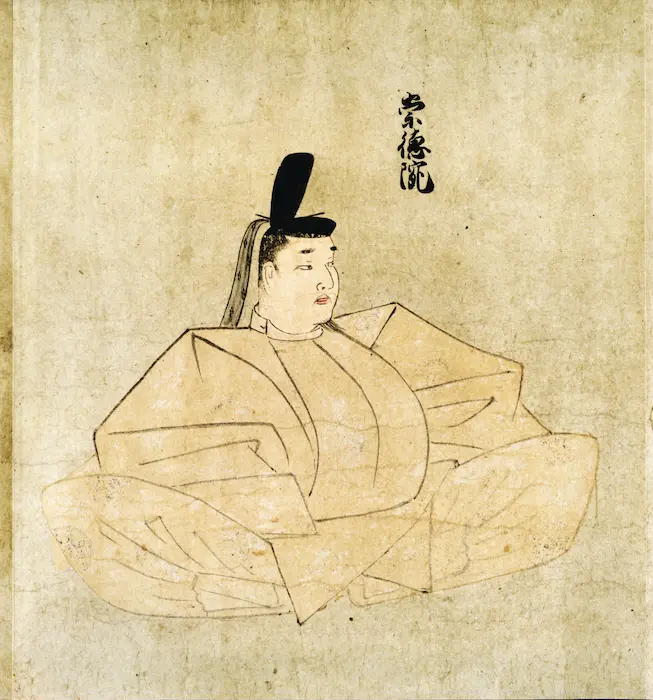
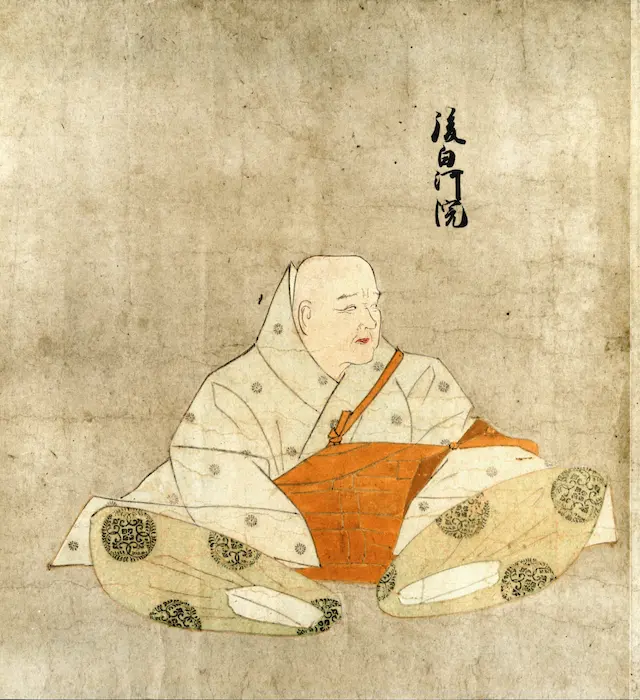
Divide within the Aristocratic Fujiwara Clan
Compounding these imperial family disputes were the internal conflicts within the powerful Fujiwara clan.
The clan, split between Fujiwara no Tadamichi and Fujiwara no Yorinaga, mirrored the broader political divide. Tadamichi, aligning with Emperor Toba, supported Toba’s younger son, Prince Masahito, who later ascended as Emperor Go-Shirakawa. In contrast, Yorinaga backed the deposed Emperor Sutoku, setting the stage for an inevitable clash.
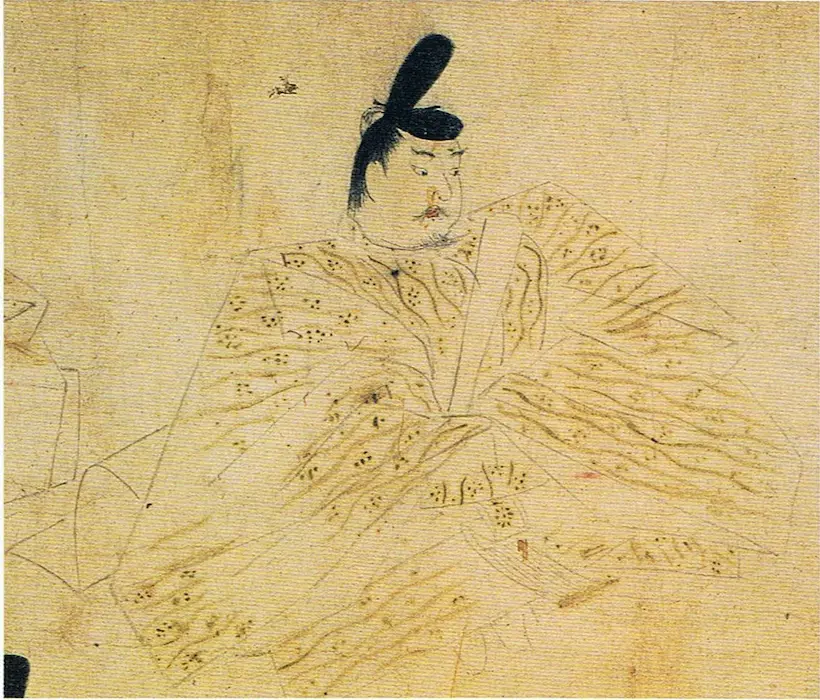
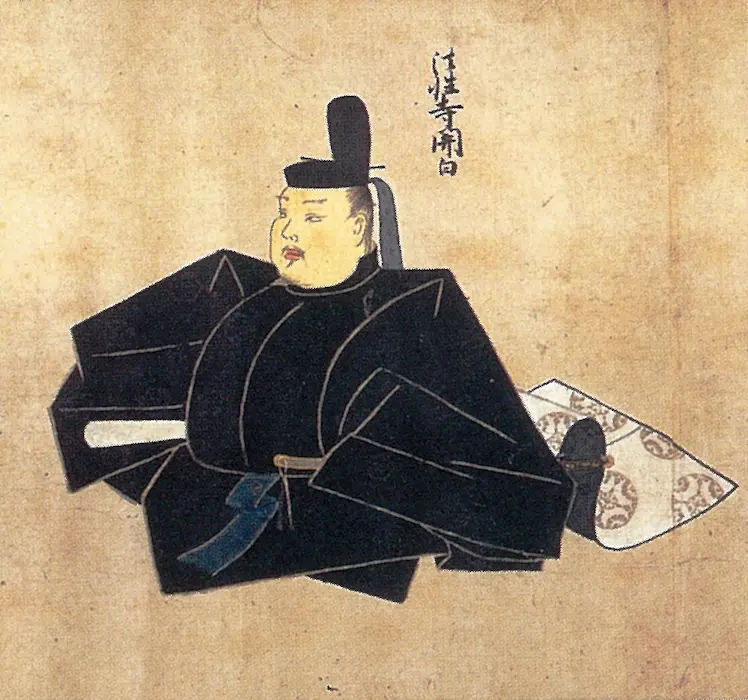
Divide within Minamoto and Taira Samurai Clans
Amidst this backdrop, the stage was also set for the rise of samurai clans as significant political players. The Minamoto and Taira clans, traditionally the military arm of the Heian court, were deeply involved in these aristocratic disputes.
Minamoto no Tameyoshi, the head of the Minamoto clan, and Taira no Tadamasa, representing the Taira contingent, sided with Sutoku and Yorinaga. Conversely, Minamoto no Yoshitomo, Tameyoshi’s son, and Taira no Kiyomori, the head of the Taira clan, supported Go-Shirakawa and Tadamichi.
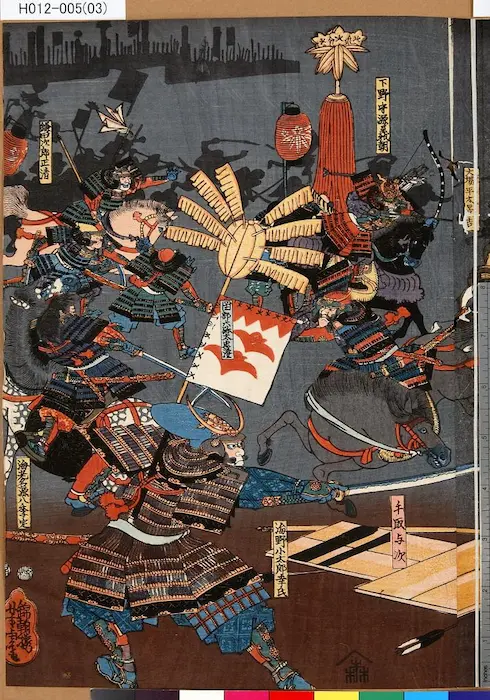
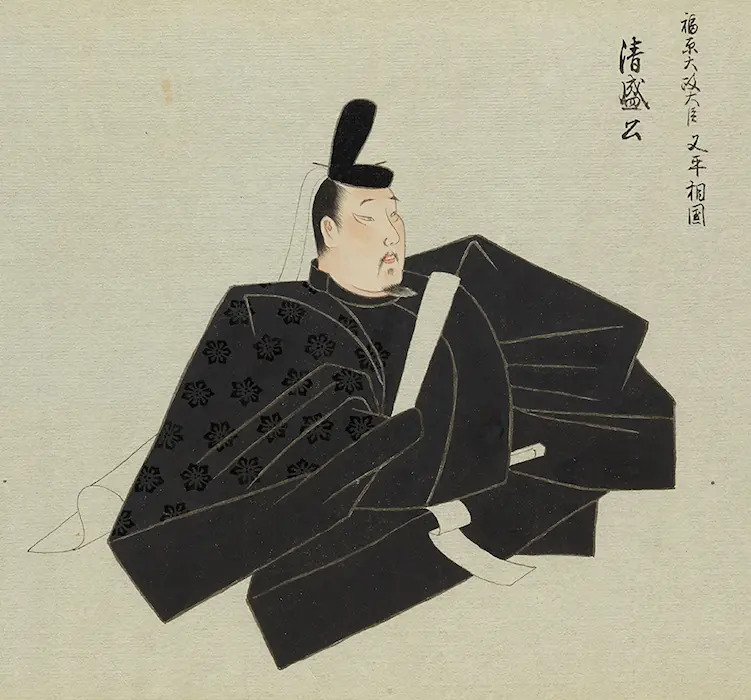
This alignment of samurai clans with opposing royal factions highlighted the samurai’s growing importance in Japanese politics and sowed the seeds for future conflicts, notably the Heiji Rebellion.
As these tensions simmered, the imperial court in Kyoto became a hotbed of intrigue and factionalism, setting the stage for the Hōgen Rebellion.
The Battles of Hōgen Rebellion
Initial Skirmishes and Strategic Planning
Emperor Go-Shirakawa’s forces, led by Minamoto no Yoshitomo and Taira no Kiyomori, were pitted against the forces loyal to retired Emperor Sutoku, spearheaded by Minamoto no Tameyoshi and Taira no Tadamasa. The conflict was not just a battle for the throne but also a family feud, with fathers fighting against sons and brothers against each other.
| Class / Rank | Party Supporting Emperor Go-Shirakawa | Party Supporting Retired Emperor Sutoku | Party Supporting Emperor Go-Shirakawa |
| Emperor | Emperor Go-Shirakawa | Emperor Sutoku (Retired) | Brothers |
| Aristocrat/Regent | Fujiwara no Tadamichi | Fujiwara no Yorinaga | Brothers |
| Samurai Leader | Minamoto no Yoshitomo | Minamoto no Tameyoshi | Son and Father |
| Samurai Leader | Taira no Kiyomori | Taira no Tadamasa | Nephew and Uncle |
The strategic planning of the battles showcased the growing prominence of samurai tactics in what was traditionally an aristocratic conflict. Minamoto no Tametomo (son of Minamoto no Tameyoshi), renowned for his archery skills and a key figure in Sutoku’s camp, suggested a night raid, a tactic mirrored by his opponent and brother, Yoshitomo.
However, Fujiwara no Yorinaga, on Sutoku’s side, rejected this strategy, a decision that would have significant consequences.
The Siege of Shirakawa-den
The decisive battle unfolded over two days, starting on July 28, 1156. It culminated in the Siege of Shirakawa-den, a fierce engagement showcasing the samurai class’s military prowess.
On the night of July 29, Kiyomori and Yoshitomo led a contingent of 600 cavalry in a surprise attack on Sutoku’s stronghold. The siege was marked by intense combat and strategic brilliance, with both sides demonstrating remarkable military skill. Tametomo’s archery prowess was a significant factor, as he successfully repulsed Kiyomori’s forces at the West gate.
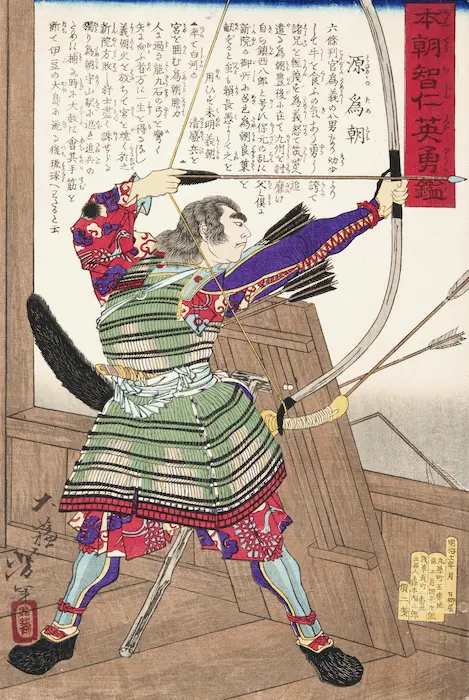
Despite the valiant efforts of Sutoku’s samurai, the tide turned when Yoshitomo suggested setting the enemy palace on fire.
This act of arson created chaos and disarray within Sutoku’s ranks. The combined assault of flames and Go-Shirakawa’s forces proved overwhelming, leading to a decisive victory for Go-Shirakawa’s camp.
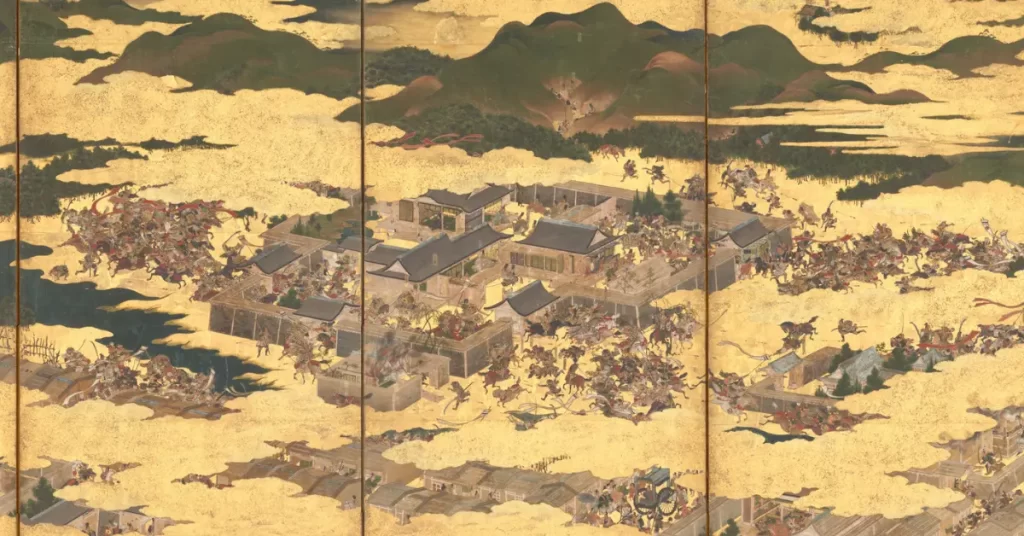
Aftermath of Hōgen Rebellion
The aftermath of the Hōgen Rebellion was a transformative period in Japanese history, reshaping the political landscape and signaling the ascent of military power. The consequences of this brief yet pivotal conflict had far-reaching implications, both immediate and enduring.
Immediate Repercussions
The immediate outcome of the rebellion was stark and uncompromising.
Retired Emperor Sutoku, the main protagonist against Emperor Go-Shirakawa, faced a harsh fate. He was exiled to Sanuki Province (now Kagawa Prefecture), where he eventually died in conditions of considerable hardship and isolation.
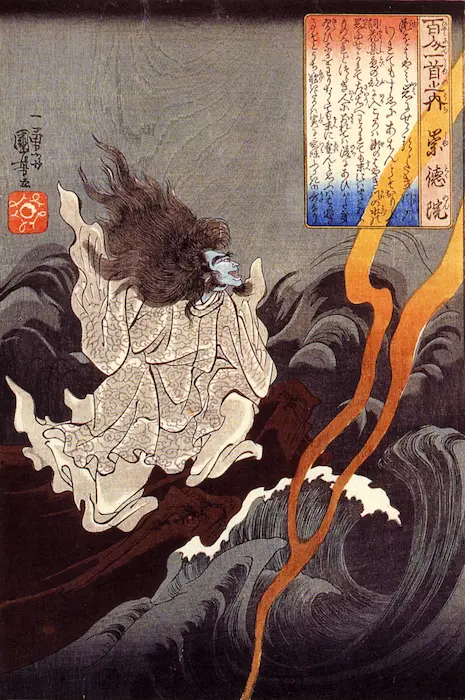
Fujiwara no Yorinaga, a key ally of Sutoku, succumbed to his wounds sustained in battle.
Moreover, prominent figures from the warrior class, such as Minamoto no Tameyoshi and Taira no Tadamasa, were executed, a notable resurgence of capital punishment, which had been dormant since the Kusuko Rebellion in 810.
This severe treatment of defeated parties underscored the ruthless nature of power struggles in Kyoto.
Rise of the Samurai Class
One of the Hōgen Rebellion’s most significant outcomes was the samurai class’s undeniable rise as a prominent political and military force.
Minamoto no Yoshitomo and Taira no Kiyomori emerged as influential figures, with their respective clans — the Minamoto and Taira — gaining unprecedented prominence.
This elevation marked a shift in the power dynamics of Japan, from the traditional aristocracy to the samurai warriors.
Long-Term Impact and Legacy
The Hōgen Rebellion profoundly impacted the subsequent course of Japanese history. It laid the groundwork for establishing samurai-led governments, a significant shift from the aristocratic rule that had dominated the Heian period. The conflict also set the stage for future clashes, most notably the Heiji Rebellion, further intensifying the rivalry between the Minamoto and Taira clans.
The legacy of the Hōgen Rebellion extended beyond the political and military realms.
It became immortalized in Japanese culture through works like “The Tale of Hōgen,” which narrated the exploits of the samurai involved in the rebellion. These narratives chronicled the events and reflected the changing societal values and the growing importance of the warrior class in Japan.
Frequently Asked Questions
What is the Hōgen Rebellion of 1156 about?
The Hōgen Rebellion of 1156 was a civil war in Kyoto, Japan. It involved a succession dispute and the involvement of prominent samurai clans.
What caused the disputes over the Japanese imperial succession?
Disputes over the Imperial succession arose from rivalries in the imperial family. Key figures were Emperor Toba, Emperor Sutoku, and Prince Masahito, along with divisions in the Fujiwara clan.
What was the significance of the Hōgen Rebellion?
The Hōgen Rebellion’s significance lies in its historical impact. It marked the rise of the samurai class in politics and the military, shifting power from aristocracy to samurai rule in Japan.
Further Readings
- The Cambridge History of Japan: Volume 2 (Heian Japan)
- The Samurai: A Military History by Stephen Turnbull

